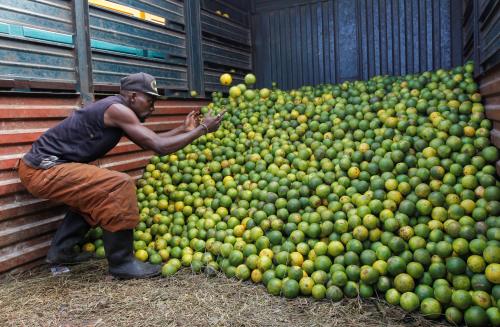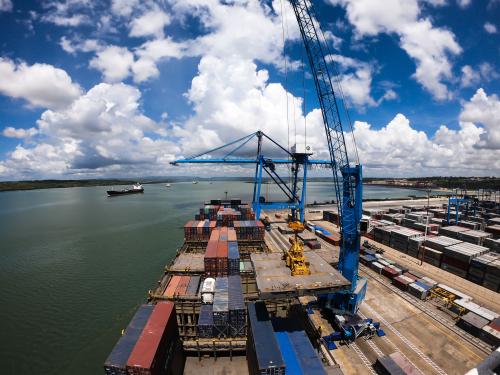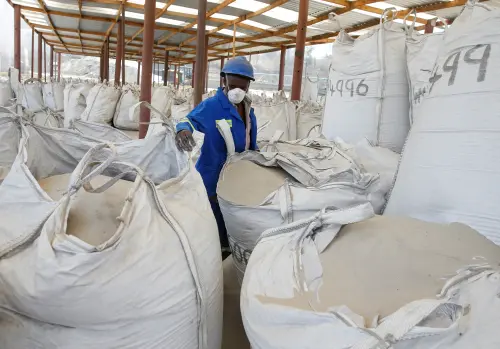Trading under the African Continental Free Trade Agreement (AfCFTA) officially commences this Friday, January 1, 2021, after years of ambitious planning and negotiations and in the face of the COVID-19 pandemic.
Optimistic experts and policymakers believe that the AfCFTA has the potential to transform and position Africa as an increasingly dynamic force on the international stage. Indeed, economic models show that the development impact of the trade agreement will be positive and significant. The AfCFTA will strengthen the bargaining power of Africa in international trade negotiations, shifting the boundary of fair trade for a more inclusive process of globalization. Wages should increase for skilled and especially unskilled workers in a shift toward a more inclusive growth model. Intra-African trade could increase by half or even double within the decade if there is a true effort to cut red tape at borders and lift other major constraints such as those on the supply side and in infrastructure. As investors look to capitalize on economies of scale offered by the AfCFTA, nothing is as pressing as integrating markets and improving connectivity to enhance the competitiveness of African countries in the global market.
Nothing worth having comes easy
While the long-term benefits of continental trade integration are substantial and will outweigh potential losses, many countries will likely experience some short-term costs as trading gets fully underway, which may threaten support for reforms many nations will need to take to fully benefit from the agreement.
As we approach the start of trading on Friday, leaders must keep in mind that addressing such costs will be crucial for maintaining the broad-based support the AfCFTA has generated. Policymakers should step up ongoing efforts to improve and rationalize public revenue and provide short-term financial incentives to compensate fiscal revenue gaps in the most vulnerable countries. Of course, the COVID-19 pandemic environment of heightening fiscal deficits and balance of payment pressures has made this job even more difficult, but acting now will create the conditions for a win-win continental trade-integration outcome.
The AfCFTA is distinguished by its diverse membership. Its member countries range from the very large to the very small. It contains both resource-rich and resource-poor countries subject to asymmetric economic shocks. Amid some of the world’s poorest nations, the continent includes diversified and complex economies, such as South Africa and Egypt. Thus, the process of trade integration and the elimination of tariffs will affect these countries differently.
Early champions of intra-African trade will bear the most immediate costs
The countries most vulnerable to fiscal adjustment shocks are also the ones that trade the most with other economies in the region and have the most customs revenue to lose. In other words, some of the most highly vulnerable countries have already been leading drivers of intra-African trade, but are likely to suffer disproportionately large revenue losses following the elimination of tariffs.
These early champions of intra-African trade should not be penalized as they implement reforms designed to boost trade within the region. Significant short-term revenue losses could result in these most vulnerable countries resorting to trade deflection, a process by which goods are imported into an AfCFTA member country with the lowest external tariff and then reexported to other countries within the free trade area with higher external tariffs—thereby avoiding those countries’ higher tariffs. Such a trend could weaken the AfCFTA, hindering its ability to encourage more investors to take advantage of expanding economies of scale and improved competitiveness to inject long-term capital and accelerate industrialization.
Other growing pains are still to come
While the potential loss of customs revenue is perhaps the most visible short-term drawback of the agreement, additional costs will also arise in different forms.
First, as labor markets adjust, costs will be associated with training and retraining of workers for sectors that grow larger and more efficient because of the agreement. Second, shifting capital to more efficient sectors is an expensive endeavor. During this time, additional expenses related to the suboptimal utilization of capital and equipment could undermine economic growth. The public and private sectors will bear these lifts together, most notably through labor and capital markets in the former and fiscal channels in the latter.
As economies reconfigure, short-term spikes in unemployment are not out of the question, and governments could face rising expenditures on social safety nets. Moreover, these costs could be compounded by shifting capital across sectors, particularly if structural transformations are lengthy and lead to shrinking fiscal space amid slowing economic growth.
Policy recommendations
Going forward, leaders must implement policies that minimize short-term adjustment costs in order to break the curse of small markets and establish a truly integrated continental market that maximizes gains from economies of scale.
For countries most exposed to short-term revenue losses, governments should prioritize policies that improve tax compliance and enforcement. These include strengthening value-added tax (VAT) systems, streamlining exemptions, and expanding the coverage of income taxes. The policies should also diversify the sources of growth, broaden the tax base, and harness digital and mobile technologies to improve record-keeping, monitoring, and auditing. The latter is particularly important in a region where multinational companies have used a complex web of international tax laws and a wide range of accounting techniques, including accelerated depreciation and offshore tax sheltering, to skirt paying taxes.
However, these fiscal reforms are unlikely to fully pay for short-term adjustment costs associated with sudden large revenue losses. Despite sustained efforts, revenue-to-GDP ratios remain very low in Africa. Inevitably, there will be challenges in identifying short-term alternatives to sudden large revenue losses associated with the AfCFTA implementation.
One temporary solution for countries vulnerable to large revenue losses and limited fiscal space is fiscal loss compensation mechanisms. One mechanism for such a policy is the AfCFTA Adjustment Facility, which provides short- to medium-term financing to vulnerable countries, enabling them to adjust smoothly to sudden tariff revenue losses and inherent macroeconomic management challenges.
The long-term solution is the diversification of sources of growth and trade in order to broaden the tax base and reduce volatility associated with commodity price cycles. A preliminary assessment of the AfCFTA shows that the most diversified economies would benefit the most in the short term, partly because industrial products and manufactured goods account for the lion’s share of intra-African trade. These goods are less affected by global volatility and have been the major drivers of global trade and income convergence. Possible measures for supporting long-term solutions include raising long-term financing both for diversifying exports and for developing vertically integrated industries to propel the growth of regional value chains and their integration into global value chains.
Signing the AfCFTA agreement was a political act with no immediate fiscal implications for signatories. Yet, doing so has galvanized the continent and strengthened the foundation of trade integration. However, effectively implementing the AfCFTA could entail huge costs, especially short-term fiscal adjustment costs, for the most vulnerable countries. These costs could transform the initial win-win continental trade-integration project into a win-loss outcome if sudden tariff revenue losses and other adjustment costs become a source of persistent macroeconomic instability.
Any short-term asymmetric distribution of benefits could threaten the agreement’s potential as a rising tide that could lift all boats, instead weakening the broad-based support necessary for establishing increasing economies of scale and efficiency gains. Mitigating these fiscal adjustment costs at the outset is key to successfully realizing the full potential of the AfCFTA and should be a priority for all nations involved.
For more on the AfCFTA and these policies, see my recent AGI working paper, “Making the AfCFTA work for ‘The Africa We Want.’”
The Brookings Institution is committed to quality, independence, and impact.
We are supported by a diverse array of funders. In line with our values and policies, each Brookings publication represents the sole views of its author(s).







Commentary
Mitigating short-term adjustment costs: Preparing for the AfCFTA
December 29, 2020